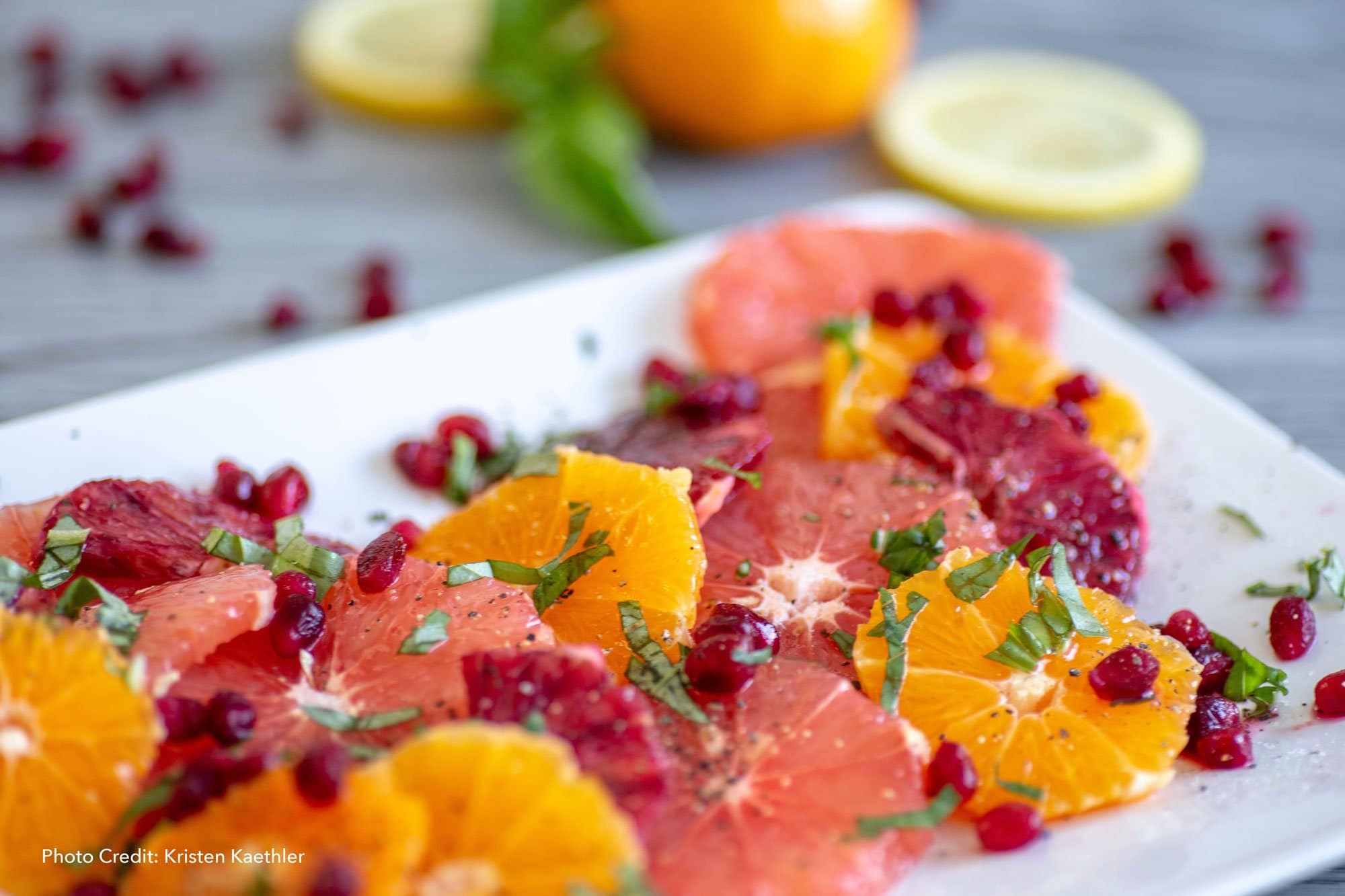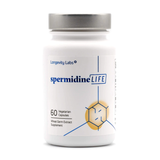
Humans and plants have many things in common, one of those things is that we both do all that we can to ensure we live as long as possible. One of the ways we can achieve that is through the intake of polyamines and polyamine synthesis. This process promotes autophagy, which is our body’s process of replacing damaged cells with new, rejuvenated cells. As you can imagine, this process can help us live a longer, happier, healthier life. Spermidine is an example of a polyamine that can help promote autophagy.
What do Polyamines Do?
Polyamines play a key role in the aging process and can even help prevent age-related diseases such as cancer, but what are polyamines? They are polycations that interact with negatively charged molecules such as DNA, RNA, and proteins. They are crucial for your body because they play a big role in cell growth, survival, and proliferation.
Changes in biogenic polyamine levels are closely associated with aging and disease. A healthy amount of polyamines function has been tied to an increase in lifespan in model organisms. Studies have also found positive effects of polyamines on stress resistance. High levels have also been found to decrease age-related oxidative stress markers.
Physiological Role of Polyamines
As we have already mentioned, polyamines play a big role in our overall wellbeing, especially as we grow older. They can stimulate cell division and proliferation, gene expression for the survival of cells, DNA and protein synthesis, regulation of apoptosis, oxidative stress, angiogenesis, and cell communication activity. Polyamines have positive effects beyond anti-aging.
They can be essential in ensuring a healthy pregnancy. Polyamines are essential for early embryonic development and successful pregnancy outcomes. Simply put, the higher the polyamine levels the better the chances the embryo develops fully and healthy.
What Are Polyamines in Plants?
Much like in humans, polyamines provide numerous benefits to plants and in fact, most of what we know of polyamines comes from plants. Polyamines in plants produced by organisms during metabolism and can be found in nearly every type of plant cell. Just like in human cells, in plant cells polyamines promote growth, development, and increase environmental stress responses.
Studies have found that polyamines, whether applied exogenously or produces endogenously, will positively affect plant growth and production. Research has found that they can increase the activity of various antioxidant enzymes in plants which successfully regulates oxidative stress in plants caused by numerous environmental factors. It should be noted that while researchers have a decent idea of how polyamines work, there’s still much to learn about how exactly polyamines regulate plant growth.
Examples of Polyamines
Polyamines exist throughout nature and can be natural, synthetic, and biological. Low-molecular-weight linear polyamines can be found in nearly every form of life. They are also found in high concentrations in the mammalian brain. Synthetic polyamines are used throughout the chemical industry, mainly in research laboratories. The biological function of polyamines is only partly elucidated. Here is a list of polyamines:
- Spermidine - natural
- Spermine - natural
- Cyclen - synthetic
- Tris(2-aminoethyl)amine - synthetic
- 1,4,7-Triazacyclononane - synthetic
If you wish to boost polyamine levels, you can take supplements or eat food high in these polyamines. For example, foods such as potatoes and chicken are high in spermidine content.
What is Polyamine Synthesis?
As we have already established, polyamine can be found in every mammal brain as well as in plants throughout nature. Polyamine synthesis occurs in the cytoplasm of cells from all tissues. They are synthesized from two different amino acids - L-methionine and L-ornithine. The latter is not found in proteins and is instead produced as a part of the urea cycle.
Another way to regulate polyamine synthesis is the synthesis of spermidine and spermine. This process requires the action of S-adenosyl-methionine decarboxylase for the synthesis of the aminopropyl donor and a transferase enzyme. This enzyme catalyses the transfer of the aminopropyl group to the primary amine groups.
How Do Polyamines Relate to Age?
Earlier in the blog post, we mentioned that polyamines have been found to have an effect on the aging process. Recent research has found that polyamines have been reported to be beneficial for aging. It is believed that they can increase lifespan while also delaying kidney glomerular atrophy.
We must again stress a point, research surrounding polyamines is still in its infancy and more research is required to fully understand how it affects our bodies fight against aging. Some research has found that high levels of polyamines can be associated with many diseases, including cancers. However, in these cases, polyamines are thought to play a small role in the development of diseases.
What Are Polyamine Levels?
The main polyamine in plant-based products is spermidine, spermine content is generally higher in animal-derived foods. During aging, the cellular levels of spermine and spermidine and the enzymatic activity of ODC tend to decrease. This can rapidly speed up the aging process and can limit the body’s ability to prevent aging diseases.
By implementing a diet that focuses on a high level of spermine and spermidine, you can increase the concentration of the compounds in the blood. It can also decrease the levels of pro-inflammatory markers, age-associated DNA methylation, renal glomerular atrophy, and mortality. Higher polyamine levels can also increase autophagy, which is the body’s process of replacing old cells with new and healthy cells.
How Do You Make Polyamine?
Now that we have established the importance of polyamines in our body, you may be wondering how you can produce polyamine. Polyamine synthesis occurs when polyamines are synthesized from the amino acids arginine, ornithine, and methionine. The first step in the pathway is the production of ornithine from arginine by the mitochondrial enzyme arginase. Ornithine is then decarboxylated by ornithine decarboxylase (ODC) to produce putrescine. Here are three ways to increase polyamine production:
- Food intake
- Cellular synthesis
- Microbial synthesis in the gut
Polyamines in humans can be increased by building your diet around polyamine synthesis. There are several polyamine foods that are high in the compounds needed to aid this process.
What Foods Are High in Polyamines?
Polyamine content will vary noticeably in food. Keep in mind, other factors such as cooking method, storage method, storage period, and serving method will have an effect on polyamine content in your food. Here are some options for high levels of polyamines in food:
- Grapefruit
- Orange juice
- Soybean
- Peas
- Pear
- Liver
- Pork
- Chicken
- Lentil soup
- Broccoli
By building a diet around foods with high polyamine content, you can help fuel the anti-aging process. This is because foods high in spermidine can help promote autophagy.
What is Spermidine Used For?
Spermidine is a precursor to other polyamines, such as spermine and thermospermine, which can increase plant tolerance against drought and salinity in plants. It is also a longevity agent in mammals due to how it impacts the induction of autophagy. Research has found that autophagy can help reduce inflammation, lipid metabolism, regulate cell growth, proliferation, and death.
Studies have also found that spermidine can encourage hair shaft elongation and lengthen hair growth. The compound was originally isolated from semen, hence the name. Many researchers and scientists believe that a diet high in spermidine can help increase longevity and overall health. You can either achieve your recommended daily spermidine intake by eating foods rich in spermidine or taking polyamines supplements.
How Spermidine Supplements Help
It can be difficult to reach your recommended daily intake of spermidine simply by just consuming it in your diet. That’s why spermidine capsules and other supplements can help you do all you can to induce autophagy and reduce the unwanted effects of aging. Our team here at Spermidine Life offers spermidine-rich capsules designed to promote cellular renewal.
We highly recommend taking your daily dose of spermidine supplements at the same time every day, preferably after you eat dinner. This makes it easy to remember to take your capsules so that you never miss a daily dose. These capsules are designed to promote autophagy, which gives your cells the ability to regenerate and rejuvenate.
Listen to this article:







